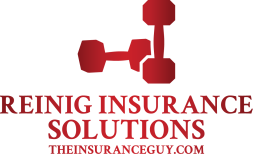You see them in airports, shopping malls, municipal buildings, and movie theatres. The Automated External Defibrillator (AED) is an amazing life saving device that has become a standard in many public gathering places. AED’s have already proven that anyone can save another person’s life…with little or no training. When someone experiences cardiac arrest, the chance of survival diminishes 10% for every minute that passes without resuscitation. Needless to say, time is of the essence. Even a quick 5 minute response time from your local fire department, the life and death outcome for your member is reduced to 50/50.
The AED’s that are manufactured today are easy to use and the costs have come down considerably as demand has increased. AED’s are not only safe, but they are designed to give both written and verbal instructions to the operator with very little or no chance of it being utilized incorrectly. An AED will not deliver a charge unless the heart has experienced sudden cardiac arrest.
Some states and local municipalities have already passed legislation requiring health clubs to carry AED’s and to have the staff certified in how to use them. The trial lawyers are waiting in the wings to attack as AED’s become an industry standard. Even if you are not yet required to carry an AED, it is still the right thing to do and could potentially help keep you out of court. The insurance industry is also taking note of the potential liability associated with clubs that elect not to have an AED on the premises. Some insurance companies are already in the process of developing specific exclusions or warranties on their policies that will eliminate coverage if you do not have an AED.
Despite some AED manufacturer’s claims that you will save money on your liability insurance if you purchase one of their units, I am not aware of any insurance company that has filed a discount for having an AED. Despite the presence of “Good Samaritan” laws, the insurance industry is still not convinced that an AED decreases or increases the liability exposure to a health club. God forbid that a member goes into cardiac arrest and an AED was on the premises but was not used due to lack of employee training and education. That being said, the insurance underwriters I have spoken to would rather defend a club that has an AED than one that doesn’t. Again, even if you are not required to carry one, having an AED is starting to become an industry standard. Once a “standard” is established, health clubs that don’t measure up to the rest of the industry risk an increased liability exposure. At the end of the day, purchasing an AED is the right thing to do.
In my opinion, within the next two years, ALL health club facilities will be required to carry an AED and employees will need to be CPR/AED certified. An AED can be purchased today for as little as $1,295 but that is only half the safety equation. It is also extremely important to maintain employee education and training. The certification and training will run another few hundred dollars but keep in mind that due to staff turnover, CPR/AED training will continue to be an on-going process. There are now companies available such as Emergency First Response that can also provide follow up training electronically to help reduce costs. Having a staff that is confident in the use of an AED will help eliminate any negligence issues.
The bottom line is that people have died and will continue to die in health clubs from cardiac arrest. As the burden of care and responsibility shifts to the club owner, the issue of having a trained staff and an AED become all the more important.
For additional information about AED’s, training and other risk management questions, please email me at ken@clubinsurance.com.
Ken Reinig is President of Association Insurance Group, Inc.

